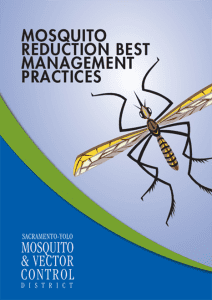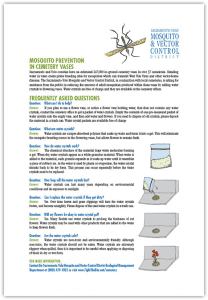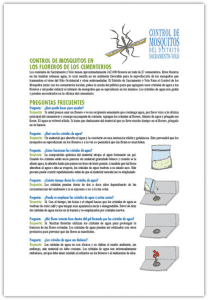ECOLOGICAL MANAGEMENT
The Ecological Management department manages the source reduction aspect of the District’s Integrated Pest Management program by actively eliminating or reducing mosquito development sites. The Department emphasizes the importance of implementing ecologically-based Mosquito Reduction Best Management Practices (BMPs) which reduce or eliminate the need for chemical control measures. Physical or environmental manipulation of aquatic sources is an important control tactic on its own, but can also enhance biological and chemical control measures.
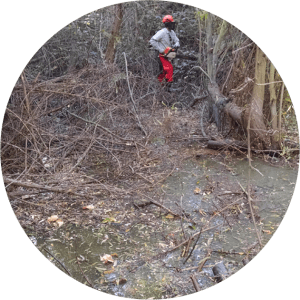
MOSQUITO REDUCTION BEST MANAGEMENT PRACTICES
In 2008, the District released the first Mosquito Reduction BMP Manual. This document provides specific information regarding our District policy, mosquito biology, and various practices that can be useful in reducing mosquito populations. Land-use specific sections provide guidance for landowners and land-managers who deal with managed wetlands, stormwater and wastewater systems, irrigated agriculture, rice production, dairies, swimming pools, cemeteries, and tire storage facilities. All programs within the Ecological Management Department strive to assist and encourage landowners with implementing BMPs, ranging from drone based project mapping, to mowing agricultural access roads, to wetland or habitat management. Please download the BMP manual by clicking here.
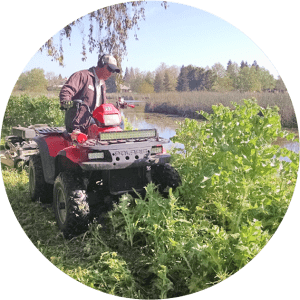
WETLAND AND FALL FLOODING PROGRAM
The department works with private and public landowners to determine when land will be flooded and take the appropriate measures for reducing mosquito development and implementing BMPs. Staff will review annual wetland management plans to help coordinate District control operations, and offer BMP support where feasible. The practice of flooding previously dry land on seasonal wetlands during the late summer or early fall, creates favorable mosquito breeding habitats, requiring immediate mosquito control treatments. Dense vegetation and the slow speed of flooding can also increase the numbers of mosquitoes produced and delay the success of other mosquito control practices such as the use of larvicides and mosquitofish. The Fall Flooding cost share program works to delay fall flooding while providing a mechanism that still allows appropriate flooding for waterfowl habitat and hunting needs.
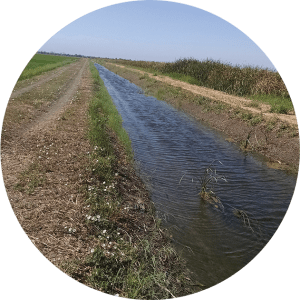
AGRICULTURAL BMP PROGRAM
The District works with agricultural land owners to reduce standing water and vegetation in fields, ditches, sumps, etc. The District will cost share with landowners and lessees using District owned or rented heavy equipment to implement BMPs where feasible. The District also works with land owners to mow access roads in early spring to give District technicians access to sumps and low areas during the spring and summer months.
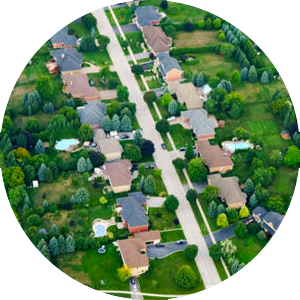
PLANNING PROGRAM
In an effort to prevent mosquito sources or potential access issues from developing in the future, the Department will review and provide comments to environmental and development planning documents. Staff will often meet with environmental and development planning teams as well as agency planning departments in an effort to implement BMPs prior to the start of construction. Projects range from flood and habitat restoration projects in the Yolo Bypass Flood, to local subdivisions and stormwater capture devices.
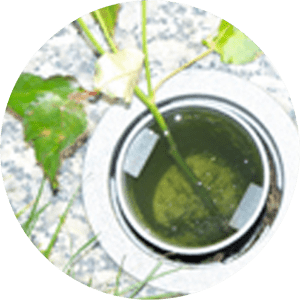
CEMETERY PROGRAM
Mosquitoes can breed in cemetery vases. The Cemetery Program asked participating cemeteries to treat cemetery flower vases with a special material that turns water into a gel that prevents mosquito development and keeps flowers fresh longer than water alone. Cemeteries in the program are responsible for maintaining the vases and for providing education to the visitors and family members.
UAS (DRONE) PROGRAM

The District’s Unmanned Aerial Systems program was started in 2016 when the FAA released UAS regulations. As part of the development of this program, the Department participated in multiple drone trials ranging from aerial multispectral imagery to underwater larval detection, to re-flooded rice field treatments, leading to the current development of today’s program.


